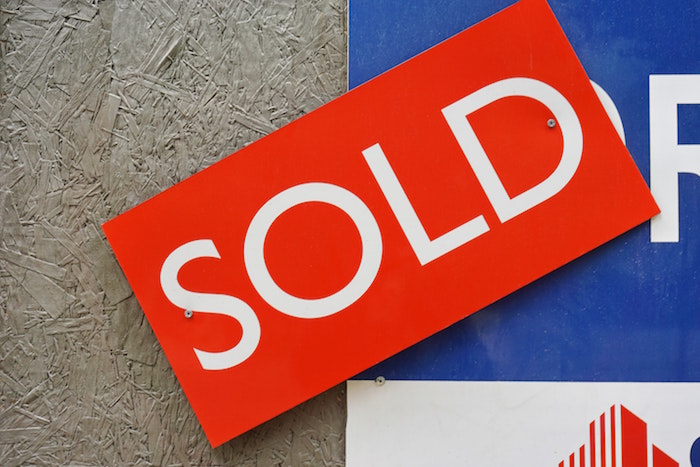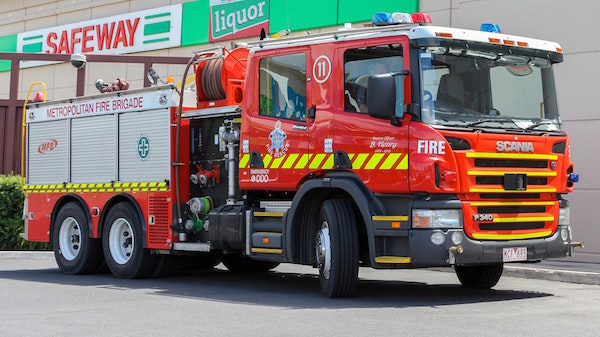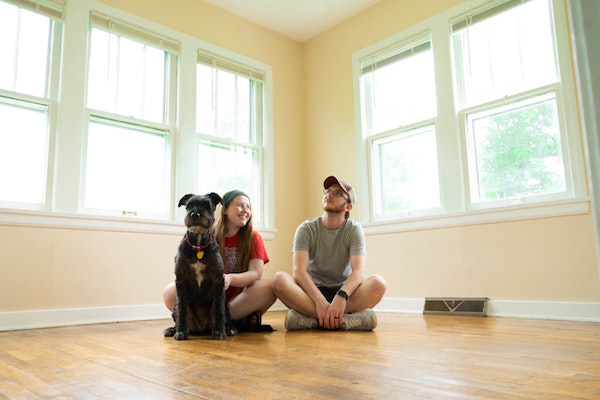Moving into a new home is an exciting time. It’s an adventure that’s equal parts stressful and fun, and it’s easy to become overwhelmed by everything you need to do.
But before your mind runs wild with your craziest interior design fantasies, one thing should take priority above all else: security.
That’s why we’ve compiled a simple to-do list that will cover all your bases for new home security. Take a look, and before you know it, you’ll be back to assembling that dream wardrobe and deciding on future pet names.
1. Change the locks
Whether you’re renting or buying a new space, don’t skimp on changing the locks. Landlords and estate agents are obligated to do this. The reality, of course, is that if locks are fairly new, there’s a high chance they won’t bother.
Stay safe by immediately replacing locks on doors and windows throughout the property, giving priority to the ground-floor and main entrance ways.
Though experts will give you different figures, it’s a good idea to get into the habit of changing or upgrading your locks at least every seven years.
Recommended reading: 2022 Burglary Statistics You Need to Know About
Upon moving in, give your local locksmith a call and have them check over the locks. Replacing will suffice, but if they have upgrades to recommend, hear them out! Security products are constantly improving.
2. Complete fixes and upgrades ASAP
Many new homeowners and renters will naturally start to notice disrepair after a couple of weeks living in their new place. Our lives are busy, so you’d be forgiven for turning a blind eye to small things, like windows that get jammed, or stiff door hinges.

However, it is important to complete any fixes, big or small, as and when you notice them. For renters, this will be a matter of calling up your landlord, but for homeowners, you’ll be responsible for arranging the necessary fixes.
Even if it may seem like something small and inconvenient, there’s a chance it could hinder the security of your property, especially if it’s a structural issue or something that could pose a fire hazard. Do it now so you don’t regret it later.
3. Test all detectors and alarms
Your home should be fitted with smoke alarms and carbon monoxide detectors when you move in, and it may also have security alarms installed.
Ideally, smoke and carbon monoxide detectors will be found in the kitchen and in hallways both upstairs and downstairs, close to sleeping areas. Alarms will be fitted to the outside of the property, as well as in the garage if you have one.
Of course, if you notice some of these things are missing, it’s imperative to have them installed immediately. Otherwise, make sure you test all of them. It’s wise to make a note of the date you first test them. You can then check them periodically every couple of months thereafter.
Recommended reading: Fire Alarm Keeps Going Off? Here’s What To Do
4. Check for fire hazards
Fire alarms aren’t the only precaution to take to secure a home against a fire. There are lots of things that can pose fire hazards. Barbecues, ovens, and broken wires are among the culprits that lead to an average of 346,800 home fires a year in the US.
Recommended reading: 2022 Thanksgiving Safety Tips: Have a Stress-Free Holiday Season with Your Loved Ones
If you’re moving into an older home, remove flammable materials that might have been once deemed acceptable as home décor, like polystyrene ceiling tiles and flammable carpets.

If you’re ever unsure about the fire safety of your home, the best way to get peace of mind is to simply book a fire safety assessment with your local fire department.
This will generally involve a professional coming into your home to assess it, providing recommendations as to how to go about improving your safety.
5. Security cameras
Security cameras might be something a lot of new homeowners initially overlook as an unnecessary expense, but anyone who has experienced a burglary or break-in will tell you otherwise.
Installing surveillance around the property (both outside and inside) is an assured way to significantly improve your home’s safety and security: that means you and your family as much as it does your possessions.
As it turns out, we’re pretty much experts in all things ‘security camera’, though we hate to brag. Check out our expert guide on choosing the best motion sensor cameras, or perhaps our article on apartment security to learn more about your affordable security options. Last but not least, here is how to install security cameras on your own.
Our core belief is that financial standing shouldn’t at all determine whether you can have access to surveillance or not, so if that’s a concern, download AlfredCamera for free and discover fantastic, fast security solutions.
Recommended reading: How To Turn Old Phones Into Security Cameras
6. Security lighting
If you do decide to invest in surveillance (we’re biased, but you should), it’s also worth considering installing additional lighting outside the property.
Though many security cameras now feature night vision or low-light functionality, lighting up the entrances to your home is a more assured way to get the most out of your cameras, so that you never miss a thing.
Not to mention, having a well-lit outdoors area is likely also a great way to deter would-be burglars, since any cameras, alarms, and warning signs you have around the outside of the property will be emphasized for everyone to see, even in the dead of night.
In fact, the presence of dogs and dummy cameras are a tried-and-true means of discouraging your home from being targeted, so security lighting will no doubt also help prevent break-ins.
7. Deep clean
Conducting a deep clean of your new home is advisable for several reasons.
First and foremost, any rats, roaches, or other nasties that could pose health problems can be discovered and dealt with before things get out of hand (and, trust us, if you’re renting, it’ll avoid issues with landlords down the line).
Recommended reading: Black Mold in House? Here is What to Do
But it’s also a great way to get to know the ins and outs of your new living space intimately, so that you can become acquainted with the layout, structural vulnerabilities, and so forth.
By deep cleaning, you might come across things that could pose issues to security; holes and damage done to floors, walls, and other structures caused by unwelcome furry tenants, for instance, that need to be addressed immediately.
You’ll also quickly recognize areas that won’t be covered by security cameras, which you can address by positioning cameras accordingly to maximize visibility. Check out our dedicated guide on home security camera placement.
8. Emergency numbers
When it comes to security, we’re firm believers in the technologies of the future: only the newest and most advanced will do. Yet, sometimes, the old school ways suffice.
Upon moving into your new property, begin to compile a list of emergency numbers. This will be the contact information for next-of-kin, everyone living in the property, local locksmiths, emergency breakdown cover, electricians, plumbers, and landlords.

Obviously, this information should all be saved on the phones of everyone living in the property, but also having it somewhere obvious, like stuck to the fridge, is also advisable.
In the event of an emergency, you’ll probably be a little panicked, so having all the necessary contact information in one obvious place will come in handy.
Conclusion
Did we forget to congratulate you on moving into your new home? Probably, but that’s only because we’re so passionate about security! Moving can get hectic fast, so it’s good to follow a checklist of essentials to do once you move in.
We want you to have the best experience possible, and the way to do that is to deal with what’s necessary first, so that you can feel at ease in your new home in no time. On that note, we’ll let you get back to unpacking.
Recommended reading:
21 Perfect Gifts for New Homeowners
Pet Cameras: Gimmick, Or Every Pet Owner’s Next Essential?
Porch Pirates: 5 Ways To Stop It From Happening To You
Bad Neighborhoods: What Are Your Safety And Security Options?
Another Car Blocking Your Driveway? Here’s What To Do
